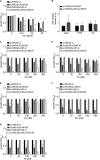Intracellular Accumulation of Staphylopine Can Sensitize Staphylococcus aureus to Host-Imposed Zinc Starvation by Chelation-Independent Toxicity
- PMID: 32071094
- PMCID: PMC7148132
- DOI: 10.1128/JB.00014-20
Intracellular Accumulation of Staphylopine Can Sensitize Staphylococcus aureus to Host-Imposed Zinc Starvation by Chelation-Independent Toxicity
Abstract
The host restricts the availability of zinc to prevent infection. To overcome this defense, Staphylococcus aureus and Pseudomonas aeruginosa rely on zincophore-dependent zinc importers. Synthesis of the zincophore staphylopine by S. aureus and its import are both necessary for the bacterium to cause infection. In this study, we sought to elucidate how loss of zincophore efflux impacts bacterial resistance to host-imposed zinc starvation. In culture and during infection, mutants lacking CntE, the staphylopine efflux pump, were more sensitive to zinc starvation imposed by the metal-binding immune effector calprotectin than those lacking the ability to import staphylopine. However, disruption of staphylopine synthesis reversed the enhanced sensitivity phenotype of the ΔcntE mutant to calprotectin, indicating that intracellular toxicity of staphylopine is more detrimental than the impaired ability to acquire zinc. Unexpectedly, intracellular accumulation of staphylopine does not increase the expression of metal importers or alter cellular metal concentrations, suggesting that, contrary to prevailing models, the toxicity associated with staphylopine is not strictly due to intracellular chelation of metals. As P. aeruginosa and other pathogens produce zincophores with similar chemistry, our observations on the crucial importance of zincophore efflux are likely to be broadly relevant.IMPORTANCEStaphylococcus aureus and many other bacterial pathogens rely on metal-binding small molecules to obtain the essential metal zinc during infection. In this study, we reveal that export of these small molecules is critical for overcoming host-imposed metal starvation during infection and prevents toxicity due to accumulation of the metal-binding molecule within the cell. Surprisingly, we found that intracellular toxicity of the molecule is not due to chelation of cellular metals.
Keywords: Staphylococcus aureus; calprotectin; nutritional immunity; pseudopaline; staphylopine; zincophore.
Copyright © 2020 American Society for Microbiology.
Figures






References
Publication types
MeSH terms
Substances
Grants and funding
LinkOut - more resources
Full Text Sources
Medical
Research Materials

